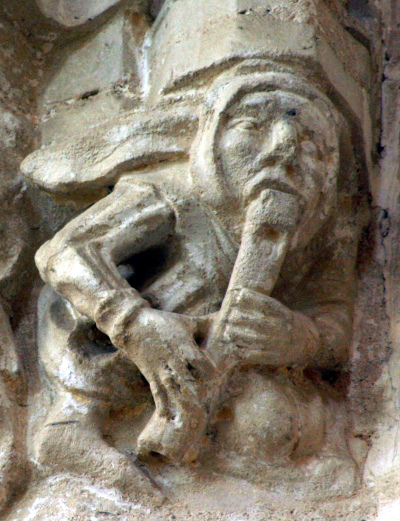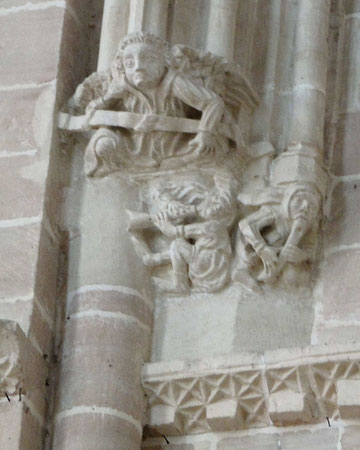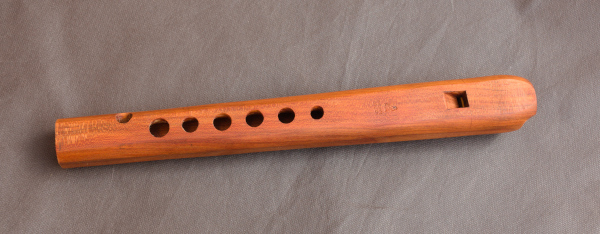PHILIPPE BOLTON, RECORDER MAKER
THE CERISY RECORDER

This fourteenth century sculpture representing a recorder player is situated in the base of a pillar in the church of Cerisy-la-Forêt, in Normandy. Whereas the recorder can frequently be seen in paintings of the same period
there are few examples in which it is depicted in sculptures.
The position of the player's hands, the way he is playing and the offset eighth hole all seem to confirm that he is playing a genuine recorder. Its length compared to the position and size of his fingers
suggests that it is fairly small, perhaps a descant (soprano).
| The sculpture is placed high up in the building and cannot be examined from close up. It is probably for this reason that the sculptor did not consider it necessary to pay particular attention to the details of the instrument, which are fairly coarsely represented. The curved shape seen in the picture opposite was probably necessary for technical reasons, to give an aesthetic shape to the base of the pillar and avoid the instrument protruding ungracefully. It does not imply that the original recorder looked exactly like that. |

|
Seen from the from the front this recorder is neither round nor square. The upper end is wider than the bottom and looks more or less rectangular and the angles are rounded off. The model was probably not made on a lathe, but carved from a block of wood and bored with a hand auger.
The recorder below, made from cherry wood, is an interpretation of this sculpture. It has a range of one octave and a sixth, with fingerings close to those of other medieval recorde. It is tuned as a soprano (descant) reorder in C at A=440 Hz so that it can be played in an ensemble.
